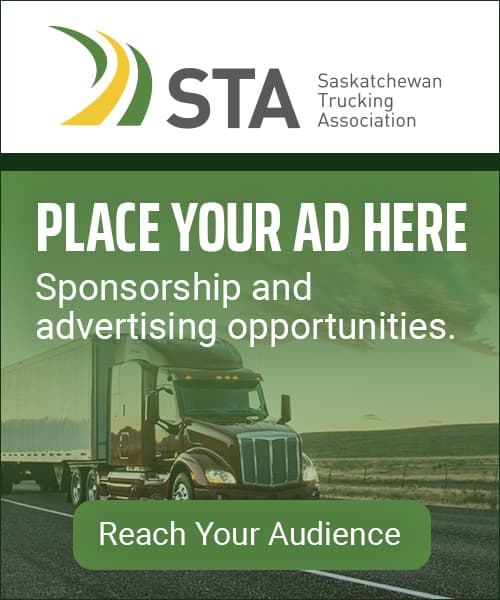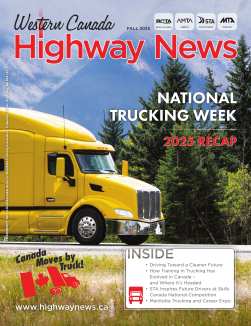
How to Detect the Driver Inc Scheme?
May 23, 2023
Driver Inc is a tax avoidance practice, whereby truck drivers, who would normally be considered employees under most independent criteria, are deliberately misclassified. This allows the carrier to avoid payroll deductions such as the employer’s share for Employment Insurance and Canada Pension Plan. This scheme is also frequently used to reduce occupational health and safety insurance costs. On the other hand, this practice allows drivers to claim tax deductions to which they would not otherwise be entitled to or, in some cases, allows them not to file a tax return at all. Conservatively, Driver Inc is estimated to cost Ottawa more than $1 billion each year in lost tax revenue.

Supply chain stakeholders doing business with so-called Driver Inc carriers could find themselves in a precarious situation if these carriers and/or their drivers were to be caught by the Canada Revenue Agency or if a driver were to hurt himself while performing a task for them. Preliminary research already indicates a negative correlation between safety and Driver Inc type businesses. For your own protection, we urge all supply chain stakeholders to determine whether their carriers are involved in the Driver Inc Scheme or any other non-compliant activities. While the indicators below aren't foolproof, they could still help you do your due diligence in your initial verifications.
Talk to your carrier about their employment practices.
Ask them how they pay their drivers and if they use “incorporated drivers” who use the carrier’s equipment?
“Ownership of the tools” – in this case a truck – is a key element in the assessment of the degree of independence by Employment and Social Development Canada and the Canada Revenue Agency. Truly autonomous drivers (Owner Operators) are owners or long-term leasers of their truck, while incorporated drivers with no financial stake in their “work tools” will likely be considered employees by regulatory authorities.
Ask the carrier if they make all the appropriate withholdings and pay their share?
If the company does not have true Owner Operators, ask if they file tax deductions and payments on behalf of their employees? Also, do they pay the employer's share of Canada Pension Plan and Employment Insurance? Companies not complying with these requirements are committing serious law violations.
If you can find a carrier’s job postings online (on their website, job board, etc.), look at their driver compensation packages.
If the job posting appears to be for a normal driver position but indicates that the employer pays “plus HST” or “pays corporations”, this is a signal that the carrier could be a corporate Driver Inc.
When drivers who would normally be considered employees incorporate and participate in the Driver Inc model, chances are the company you are dealing with is also not paying the occupational health and safety insurance premiums of these drivers.
This means that when your company uses these drivers and/or they are on your property, you could put yourself in a precarious situation. If a Driver Inc is injured while performing work at your establishment, he may try possible to be compensated, as he is probably not covered by the CNESST. Therefore, you could be subject to prosecution. To limit your liability risk exposure, we strongly recommended that you ensure that your carriers have coverage for all their workers and that the subcontractors with whom they do business benefit from equivalent personal coverage.
If the company has incorporated drivers, ask if they issue a T4A for tax purposes.
This should be the case if the drivers are incorporated and operate as Personal Services Businesses (PSBs). Remember that even if this is the case and it is Driver Inc – not true Owner Operators – the carrier could still be in violation of labor laws.
You Might also ask the following questions
- Have you ever been audited by occupational health and safety insurance authorities?
- If so, what was the result?
- What is your occupational health and safety insurance certificate number?
- How much did you pay in occupational health and safety insurance premiums last year?
- Please provide proof that your Employer Health Tax remittances were paid last year.
- Employer Health Tax payments were for how many employees?
- How many company trucks do you have?
- And what are your total T4 employee compensation expenses?
- How many commercial vehicle user registrations (CVU registrations) do you have and what are their numbers?
- Do you use autonomous drivers (Owner Operators)?
- If so, do they meet the independence criteria of the Canada Revenue Agency and Employment and Social Development Canada?
- Do they have adequate personal insurance?
Download the file below, to print and share with others
This document is designed for informative purposes only and to help supply chain stakeholders exercise due diligence when dealing with their carriers. For more information about Driver Inc, please contact info@sasktrucking.com
STA Sponsorship & Advertising Opportunities
Get Involved!
Sponsorship fuels events and programs, while advertising puts your brand directly in front of an industry-specific audience. We are flexible, no matter the budget!



